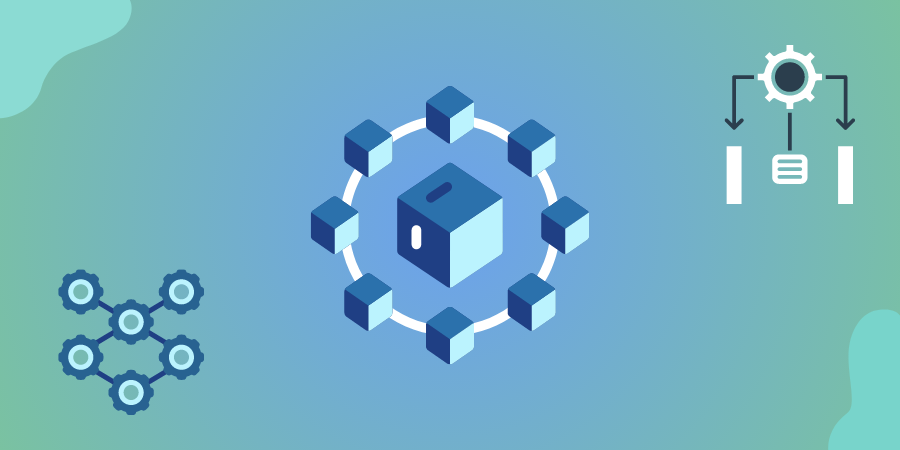
Introduction
Microservices have emerged as a popular architectural pattern, transforming the way we build and deploy complex applications. While the concept of microservices might seem abstract and complex, you'd be surprised to know that it shares similarities with many everyday examples. In this blog post, we will explain the concept of microservices using simple, real-life examples to help you understand the benefits and applications of this approach.
Let’s Define
In the world of software development, microservices are an architectural style that breaks down an application into smaller, independent components, each focused on a specific business function. These components, or microservices, are loosely coupled, enabling them to communicate and collaborate using lightweight protocols like HTTP or REST. This approach results in applications that are more scalable, maintainable, and flexible compared to traditional monolithic architectures.
Everyday Examples of Microservices
To better understand the concept of microservices, let's explore some common examples from everyday life:
Example 1: Fast-food Restaurant
A fast-food restaurant operates like a microservices-based application. Each station within the restaurant (order counter, kitchen, and drive-thru) focuses on a specific task and communicates with other stations to fulfill a customer's order. The order counter takes the order and sends it to the kitchen, which prepares the meal and sends it back to the order counter or drive-thru for distribution. This modular approach ensures that each station can work independently while collaborating effectively with others.
Example 2: Airport Operations
Airports handle multiple functions, including check-in, security, boarding, baggage handling, and air traffic control. Each function operates as an independent microservice, working together to ensure smooth airport operations. For instance, the check-in counter communicates with the baggage handling system to ensure your luggage reaches the right destination, while the boarding gate communicates with air traffic control to coordinate flight departures and arrivals.
Example 3: Manufacturing Assembly Line
In a manufacturing assembly line, various stations perform specific tasks, such as welding, painting, and quality control. Each station functions as a microservice, working independently while collaborating with other stations to produce the final product. This modular approach allows for increased efficiency, as each station can be optimized and scaled according to demand.

Benefits of Microservices in Software Development
The microservices approach brings a range of benefits to software development, enabling organizations to build more resilient, scalable, and adaptable applications. Here, we elaborate on the advantages of using microservices:
- Improved Scalability: One of the primary benefits of microservices is their ability to scale independently. With a monolithic architecture, scaling requires deploying multiple instances of the entire application, which can be resource-intensive and inefficient. In contrast, microservices allow developers to scale only the components experiencing increased demand or load, leading to more efficient resource utilization and better overall performance.
- Enhanced Maintainability: Microservices are smaller and more focused, making them easier to understand, modify, and maintain. This leads to faster development cycles, as teams can work on individual services without impacting the entire system. Additionally, updates and bug fixes can be deployed for a single service without requiring a complete redeployment of the application, resulting in reduced downtime and improved system stability.
- Greater Flexibility: The decoupled nature of microservices promotes flexibility in several ways. First, it allows developers to choose the best technology, library, or database for each service, rather than being locked into a single technology stack for the entire application. This can lead to increased efficiency, as teams can leverage specialized tools tailored to specific tasks. Second, microservices enable teams to work more independently and in parallel, speeding up the development process and reducing bottlenecks. With a clear separation of concerns, individual teams can focus on their specific microservices without worrying about how their work will impact other parts of the system.
- Better Fault Isolation: In a microservices architecture, if a single service fails, it is less likely to cause a complete system failure, as each service runs independently. This fault isolation enables more resilient applications, as issues can be contained and resolved more quickly without affecting the entire system.
- Easier Integration and Deployment: Microservices facilitate continuous integration and deployment (CI/CD), as they can be tested and deployed independently. This means that updates, new features, or bug fixes can be released more frequently, improving the overall agility of the development process.
- Simplified Evolution and Adaptation: As business requirements change, microservices make it easier to adapt applications by allowing developers to replace, modify, or add new services without overhauling the entire system. This helps keep applications up-to-date and aligned with evolving business needs.
Conclusion
By exploring everyday examples, we can better understand the concept of microservices and their benefits. Just as fast-food restaurants, airports, and manufacturing assembly lines can efficiently coordinate multiple functions through modular, independent components, microservices-based applications can achieve improved scalability, maintainability, and flexibility. Embracing the microservices architecture in software development can lead to more robust and efficient applications, capable of meeting the ever-evolving demands of today's digital landscape.



























 Batoi Corporate Office
Batoi Corporate Office